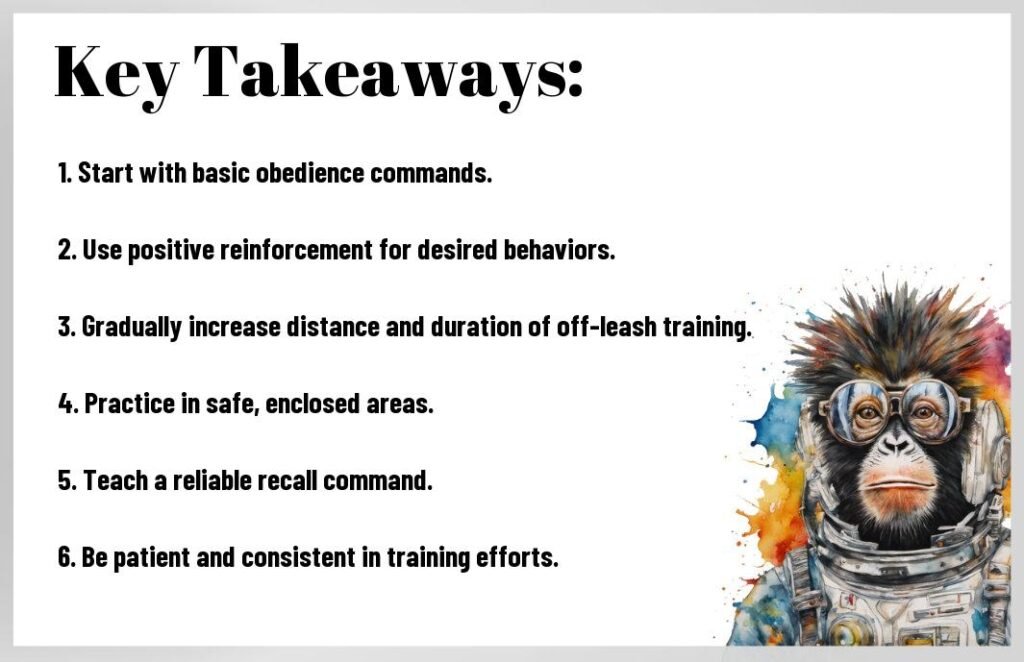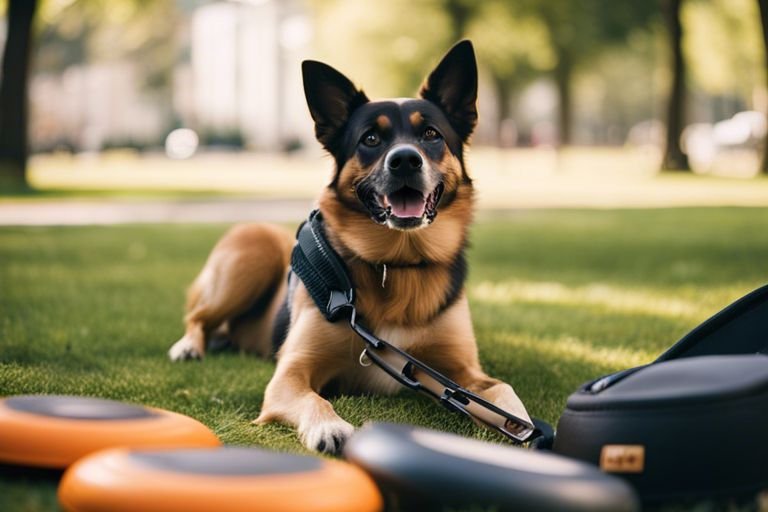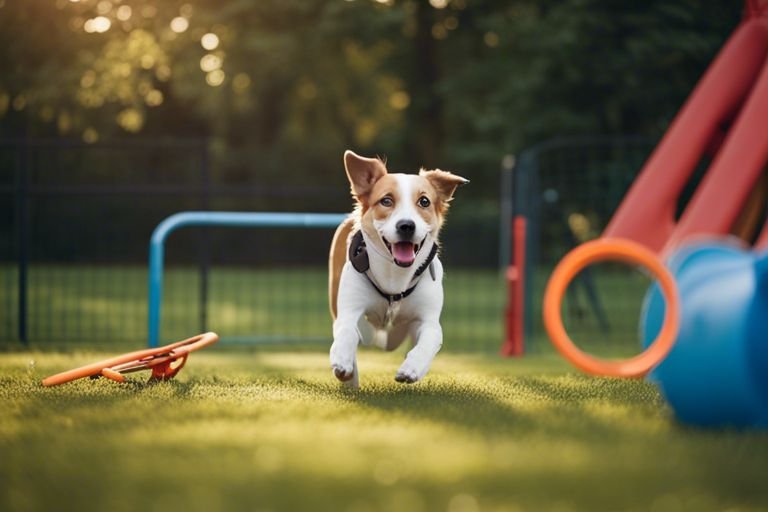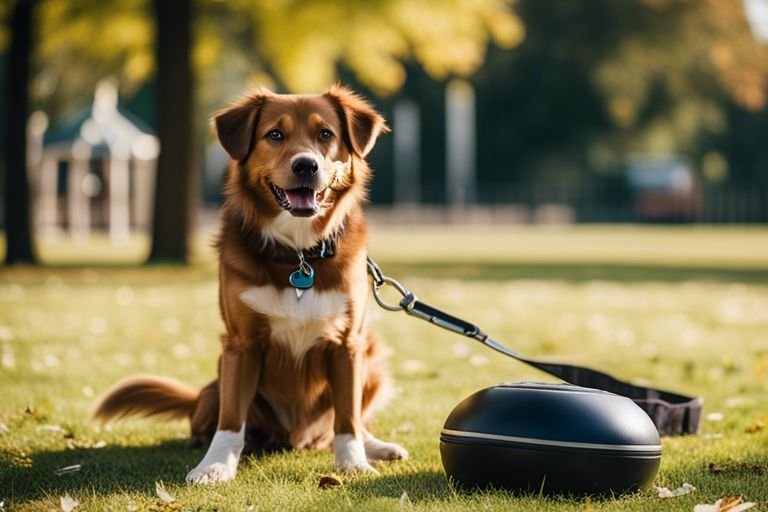5 Common Off-Leash Training Mistakes To Avoid

You love to give your furry friend the freedom to run and play off-leash, but there are common mistakes that can hinder your training progress. In this informative blog post inspired by the principles of Cesar Millan, the “Dog Whisperer,” you will learn about five common off-leash training mistakes to avoid. By understanding and correcting these errors, you can strengthen your bond with your canine companion and ensure a safe and enjoyable off-leash experience for both of you. Let’s dive in!
Key Takeaways:
- Consistent Training: It is important to consistently train your dog to ensure they understand and obey commands.
- Proper Recall Training: Focus on teaching reliable recall to prevent your dog from running off when off-leash.
- Choosing the Right Environment: Select safe and secure environments for off-leash training to avoid distractions and dangerous situations.
- Avoiding Negative Reinforcement: Use positive reinforcement methods to encourage desired behaviors and avoid punishing your dog for mistakes.
- Understanding Your Dog’s Behavior: Take the time to understand your dog’s body language and behavior cues to effectively train them off-leash.

Mistake #1: Not Establishing Clear Boundaries
Before entering into off-leash training with your dog, it is crucial to establish clear boundaries. Without clear boundaries, your dog may become confused about what is expected of them, leading to disobedience and potential safety hazards.
Lack of Consistency in Training
On your off-leash training journey, it’s vital to be consistent in your approach. Inconsistency in enforcing rules and commands can send mixed signals to your dog, making it challenging for them to understand what is allowed and what is not. Make sure that everyone involved in the training process is on the same page and follows the same set of rules to avoid confusion.
Failing to Set Clear Expectations
On your off-leash training adventure, failing to set clear expectations can hinder your progress. Your dog needs to know what you expect from them in various situations. Establishing clear expectations through consistent training will help your dog understand what behaviors are acceptable and which ones are not.
Another critical aspect of setting clear expectations is communicating effectively with your dog. Use positive reinforcement techniques to reward desired behaviors and redirect or ignore unwanted behaviors. Consistency and patience are key as you work with your dog to establish clear boundaries and expectations during off-leash training.
Mistake #2: Inadequate Socialization
You know how important socialization is when training your dog off-leash. Inadequate socialization can lead to behavioral issues and difficulties in handling your dog in various situations. Let’s probe into the common aspects of inadequate socialization that you should avoid.
Insufficient Exposure to New Environments
On your off-leash training journey, it’s crucial to expose your dog to new environments regularly. Dogs thrive on routine, but they also need to feel comfortable and confident in different settings. If you only train your dog in one familiar location, they may struggle to follow commands or exhibit anxiety when placed in an unfamiliar place. To prevent this, mix up your training locations, such as parks, beaches, or urban areas, to help your dog adapt and feel at ease in any environment.
Not Introducing Your Dog to Various People and Animals
Various people and animals play a significant role in your dog’s socialization. If you limit your dog’s interactions to only a few known individuals, they may not know how to behave around strangers or other animals. Introducing your dog to a variety of people of different ages, genders, and ethnicities will help them build confidence and learn how to interact politely. Additionally, exposing your dog to different animal species can teach them how to socialize with other pets and wildlife safely.

Mistake #3: Poor Communication
After tackling the first two common off-leash training mistakes, let’s explore the importance of clear communication with your pup. Poor communication can lead to confusion and frustration during training sessions, hindering your progress in teaching your dog proper off-leash behaviors.
Not Using Positive Reinforcement Techniques
One of the key elements of effective communication with your dog is using positive reinforcement techniques. This means rewarding good behavior with treats, praise, or toys to reinforce the desired actions. By focusing on positive reinforcement, you can create a strong bond with your dog based on trust and mutual respect. This approach encourages your dog to repeat behaviors that lead to positive outcomes, making off-leash training more successful and enjoyable for both of you.
Relying Too Heavily on Verbal Commands
Verbal commands are necessary in off-leash training, but relying solely on them can be a mistake. Dogs rely more on body language and energy cues than verbal cues, so it’s crucial to use a combination of both to effectively communicate with your furry companion. While verbal commands can be useful, your dog also pays attention to your tone of voice, body posture, and gestures. Therefore, incorporating these non-verbal communication tools into your training sessions can enhance your dog’s understanding and responsiveness.
To effectively communicate with your dog during off-leash training, strive to maintain a balance between verbal commands and non-verbal cues. Remember to use positive reinforcement techniques to motivate and reward your dog for good behavior, fostering a strong and trusting relationship between you and your furry friend.

Mistake #4: Inconsistent Reward System
Keep consistency in your reward system during off-leash training to ensure effective results. Inconsistency can confuse your dog and make it harder for them to understand what behavior is being rewarded.
Over-Rewarding or Under-Rewarding Behavior
One common mistake in off-leash training is over-rewarding or under-rewarding your dog for their behavior. If you over-reward, your dog might start expecting a treat for every small action, making it difficult to wean them off treats later on. On the other hand, if you under-reward, your dog may not feel motivated to continue obeying commands. Finding the right balance is crucial in maintaining your dog’s focus and engagement during training sessions.
Failing to Phase Out Treats and Toys
Mistake #4 also includes failing to phase out treats and toys gradually. While treats and toys can be great motivators during training, it’s imperative to slowly reduce their frequency to prevent your dog from becoming dependent on them. If you don’t phase out treats and toys, your dog may only listen or follow commands when they know they will receive a reward, which can be problematic in real-life situations where treats or toys are not readily available.
It’s important to transition from relying on treats and toys to using verbal praise and physical affection as rewards for your dog’s good behavior. This transition should be gradual, starting with reducing the number of treats given per training session and replacing them with verbal cues like “good boy/girl” or a pat on the head. By phasing out treats and toys effectively, you are teaching your dog to listen and obey based on your commands and not just for the rewards.

Mistake #5: Not Gradually Increasing Freedom
Giving Too Much Freedom Too Soon
To establish successful off-leash training, you must gradually increase your dog’s freedom. Rushing this process can lead to disobedience and potentially dangerous situations. Start by allowing your pup off-leash in a secure, enclosed area to assess their response to the newfound freedom. Keep in mind, just because your dog responds well to commands on a leash does not guarantee the same behavior off-leash.
Not Providing Enough Structure and Supervision
Providing sufficient structure and supervision is crucial in off-leash training. Many dog owners make the mistake of assuming their dog will automatically know how to behave off-leash. Without clear boundaries and supervision, your dog may become overwhelmed by distractions and revert to undesirable behaviors. Regularly practice recall commands and establish a routine to maintain consistency and reinforce positive behavior.
Supervision is key in off-leash training to ensure your dog’s safety and success. Always keep an eye on your pup and be ready to intervene if they show signs of disobedience or if they are in a potentially risky situation. By providing structure and supervision, you can help your dog learn to navigate the freedom of being off-leash responsibly.
Avoiding Common Pitfalls
Now, one of the most crucial aspects of off-leash training is being aware of your dog’s body language. Your dog can communicate a lot through their body posture, facial expressions, and tail movements. By understanding your dog’s body language, you can anticipate their reactions and prevent any potential issues during off-leash training sessions. For example, if your dog’s body is tense, ears are pinned back, or they are growling, these are signs that they may be feeling stressed or agitated, and it’s vital to address the situation before it escalates.
Being Aware of Your Dog's Body Language
Being in tune with your dog’s body language is key to successful off-leash training. Pay attention to how your dog carries themselves, the position of their tail, and how they interact with other dogs or people. This awareness will help you intervene promptly if your dog starts showing signs of discomfort or aggression, ensuring a safe and positive training experience for both of you.
Staying Calm and Assertive in Challenging Situations
Staying calm and assertive is another critical factor in off-leash training. Dogs can pick up on your energy, so it’s vital to remain composed and confident, especially in challenging situations. If you become anxious or frustrated, your dog may mirror these emotions, leading to setbacks in their training progress. By staying calm and assertive, you can effectively guide your dog through challenging scenarios and reinforce positive behaviors.
Another vital aspect of staying calm and assertive is setting clear boundaries and rules for your dog. Consistency is key in off-leash training, so make sure to communicate your expectations firmly and uphold them with a calm and assertive demeanor. When your dog knows what is expected of them and trusts your leadership, they will be more responsive and obedient during off-leash sessions.
To wrap up
On the whole, it is crucial to avoid these common off-leash training mistakes if you want to successfully train your dog for off-leash activities. Do not forget, consistency, patience, and positive reinforcement are key when it comes to training your furry friend. By being mindful of these common pitfalls and focusing on building a strong bond with your dog, you can enjoy the freedom and joy that comes with off-leash activities.
FAQ
Q: What is the first common off-leash training mistake to avoid?
A: Not Starting Off-Leash Training Early Enough. It is crucial to begin off-leash training when your dog is still a puppy to establish good habits early on.
Q: How can I avoid the second common off-leash training mistake?
A: Lack of Consistency in Training. Consistency is key in off-leash training. Make sure to enforce the same rules and commands every time you train your dog off-leash.
Q: What is the third common off-leash training mistake that should be avoided?
A: Overlooking Basic Obedience Training. Before starting off-leash training, ensure that your dog has mastered basic obedience commands such as sit, stay, and come.
Q: How can I prevent the fourth common off-leash training mistake?
A: Failing to Use Proper Reinforcement Techniques. Positive reinforcement, such as treats and praise, is imperative in off-leash training. Avoid using punishment techniques that may confuse or scare your dog.
Q: What is the fifth common off-leash training mistake to avoid?
A: Not Considering Your Dog’s Safety. Always prioritize your dog’s safety when training off-leash. Be aware of your surroundings, use a secure location, and ensure your dog is wearing proper identification tags.




